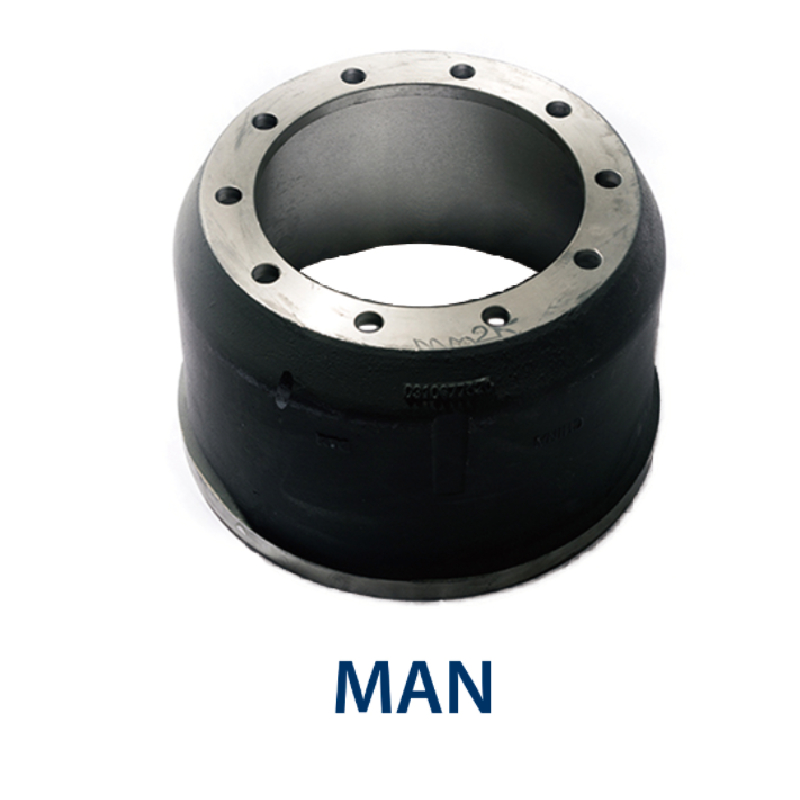des . 05, 2024 14:33 Back to list
how does a brake drum work
How Does a Brake Drum Work?
Braking systems are an essential component of any vehicle, ensuring safety and control during operation. Among the various types of braking systems, brake drums play a crucial role, particularly in older vehicles and some modern designs. Understanding how a brake drum works requires a closer look at its components, the physics of braking, and the differences between brake drums and disc brakes.
Components of a Brake Drum
A brake drum system consists of several key components. The primary elements include the brake drum itself, brake shoes, wheel cylinders, and a hydraulic system.
1. Brake Drum The brake drum is a cylindrical component made from cast iron or other durable materials. It is attached to the wheel and rotates with it.
2. Brake Shoes Inside the brake drum are curved brake shoes lined with friction material. These shoes are pushed against the inside of the drum to create the necessary friction for stopping the vehicle.
3. Wheel Cylinder This component is positioned between the brake shoes and contains pistons that move outward when hydraulic pressure is applied.
4. Hydraulic System The hydraulic system transfers force from the brake pedal to the wheel cylinder. When the driver presses the pedal, it compresses the brake fluid, pushing the pistons in the wheel cylinder outward.
The Braking Process
The operation of a brake drum can be described in a few straightforward steps
1. Applying the Brakes When the driver presses the brake pedal, the hydraulic system is activated. This creates pressure in the brake lines that pushes brake fluid into the wheel cylinder.
how does a brake drum work

2. Movement of the Piston As hydraulic pressure builds, the pistons in the wheel cylinder move outward. This motion pushes the brake shoes against the inner surface of the brake drum.
3. Friction Generation The contact between the brake shoes and the brake drum generates friction. This friction is what slows down the rotation of the wheel, ultimately bringing the vehicle to a stop. The amount of friction produced depends on the material of the brake shoes and the condition of the drum.
4. Heat Dissipation During the braking process, significant heat is generated due to the friction between the brake shoes and the drum. Brake drums are designed to dissipate this heat efficiently to prevent overheating, which can lead to brake fade and reduced effectiveness.
5. Releasing the Brakes Once the driver releases the brake pedal, the hydraulic pressure in the system decreases. This causes the pistons in the wheel cylinder to retract, allowing the brake shoes to move away from the brake drum. As a result, the wheels are free to rotate again.
Advantages and Disadvantages
Brake drums have both advantages and disadvantages compared to disc brakes.
Advantages - Cost-Effective Brake drums are generally less expensive to produce and maintain. - More Effective in Certain Situations They can offer better brake force in low-speed applications, such as in heavier vehicles like trucks and buses. - Self-Adjusting Capabilities Some drum brake designs have self-adjusting mechanisms that can help maintain optimal clearance between the shoes and drum.
Disadvantages - Heat Dissipation Issues Brake drums can struggle to dissipate heat as effectively as disc brakes, making them more susceptible to brake fade during prolonged use. - Weight Brake drum assemblies tend to be heavier than disc brake systems, which can affect overall vehicle performance. - Greater Complexity The internal mechanism can be more complex to service compared to disc brakes, making repairs more challenging.
Conclusion
Brake drums play a vital role in the braking systems of many vehicles. By understanding how a brake drum works—including its components and the process of friction generation—we can appreciate the engineering behind vehicle safety. While brake drums have their advantages, it's crucial for drivers to be aware of their limitations and maintenance needs. As technology evolves, we may see continued shifts towards disc brake systems in modern vehicles; however, brake drums remain an important part of automotive history and engineering.
-
High-Quality Brake Drum MAZ – Durable Drum Brake Drum & Brake Drum and Brake Shoe Solutions
NewsJul.05,2025
-
High-Quality Brake Drum Iveco - Durable Drum Brake Drum & Brake Shoe Solutions
NewsJul.05,2025
-
High-Quality Brake Drum MAZ – Durable Drum Brake Drum & Brake Drum and Brake Shoe Solutions
NewsJul.04,2025
-
Brake Drum Man - High-Quality Drum Brake Drums & Brake Shoes for Reliable Performance
NewsJun.24,2025
-
High-Quality Brake Drum Kamaz – Durable Drum Brake Drum & Brake Shoe Replacement
NewsJun.10,2025
-
High-Quality Brake Drum Liza for Drum Brake Systems - Superior Durability and Performance
NewsJun.10,2025
